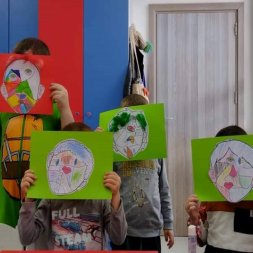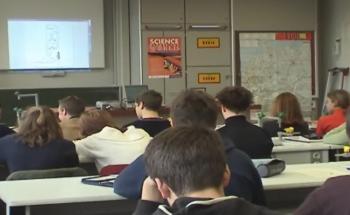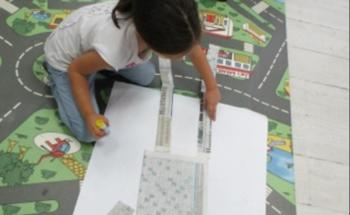
Putting Primary CLIL into Practice
This well-established course led by award-winning trainer and author Keith Kelly, presents ideas on teaching content through English. The course, for teachers working with children from 6-11, takes a 3D approach to CLIL (concepts, procedures, language), with examples from classes at Keith’s school to equip teachers with tools to prepare lessons best suited to their learners' abilities and needs.
Description
Previous Primary CLIL courses at Anglia School have focused on the ‘CLIL for learning about UNSDGs’, ‘CLIL for Delivering an Inclusive Curriculum’. Ask if you have a particular area of interest for your school, and we will create a bespoke course. The course offers a comprehensive combination of CLIL theory and practice to equip teachers with ideas and skills to help their students work through curriculum material in English, and support students to speak and write in the foreign language.
At Anglia School we use a learning-by-doing approach in all curriculum areas (Science, Maths, Music, Art, Geography, PE, Crafts, Culture, Citizenship, Story, Play, Inclusion, Well Being) to develop critical and creative thinking skills in our learners and the language they need while using these skills. Our primary curriculum is thematic. When learning about ‘forest habitats and animals’, the curriculum areas are integrated in activities in our planned topic. At the same time, we recycle competences over the year, so our children learn about ‘processes’ and ‘cause-effect’ in science, these are reused during art and craft activities. In this way, we can plot and recycle language and skills development strategically in our primary curriculum.
Participants are given access to our entire primary curriculum and we participate in activities with children. We develop resources together with course participants for use back in school. All resources created are collated and published through the FACTWorld Journal and participants receive their own personal copy. This enables us to disseminate the results of our teacher development courses to participants and their schools, but also to a wider audience interested in Putting Primary CLIL into Practice. You can find all our publications at FACTWorld.
Last, but by no means least, participants experience the language, sights, sounds, history and culture of the wonderful city of Plovdiv through organized visits and activities.
Learning objectives
During the course Putting Primary CLIL into Practice, participants will be able to understand the processes involved in learning to learn in a foreign language for primary children. This includes exploring the process of delivering input content to primary learners through a foreign language. In doing so, participants will develop an awareness of the conceptual, procedural and linguistic demands that are made on their children.
In developing an awareness of these demands, participants will learn how to assess, mediate and moderate language demands of primary CLIL lessons to meet the specific needs of their learners.
In examining the delivery of input content, participants will be encouraged to adopt age-appropriate input processing instruments and methods in their lessons to help learners deal with curriculum content in a foreign language.
Participants will also create supportive output scaffolding for talking and writing in the content curriculum areas through English as a foreign language.
With these activities, participants will gather and create sequenced curriculum-based materials for their CLIL classes back in school.
As part of the course, participants will communicate through the medium of English with other participants on CLIL teaching-related topics of discussion. They will collaborate in group problem-solving activities though the medium of English and present results of group work in plenary in English.
Additionally, the course aims to provide practice for participants in leading curriculum-based activities in the English language with their peers.
Methodology & assessment
Intercultural communicative competence is developed throughout our curriculum and we implement this skill area by developing learning experiences which enable children to look at ‘self’ and ‘other’. Participants are asked to practice similar activities in workshops, and suggest and create activities for their curricula where this competence can be developed.
Anglia School methodology employs ‘up-down’ dynamics during lessons where our activities are specially targeted to meet children’s learning needs. In practice, we prepare activities to move between more and less dynamic experiences in order that our learners can maximize their learning potential. Participants are asked to consider this dynamic factor in sequencing activities they practice and materials they produce.
We develop a wide range of age-appropriate curriculum learning skills (hypothesis, cause-effect, process description etc.), which are presented in our lesson materials and followed by discussion of principles and how to best recycle and consolidate these skills over time. Participants are invited to show this sequencing and recycling of skills in the materials they produce.
A lot of time is invested in appropriate task sequencing from input to output and participants are presented with a rich range of primary input visual and text content materials where methods used to help children process these inputs is explicitly shown, similarly where our learners are asked to speak or write in English, a lot of thought goes in to how we support their output and participants see this scaffolding in our course materials. Participants are asked to make use of this ‘guided input’ and ‘supported output’ in their own materials writing.
Certification details
The Putting Primary CLIL into Practice certificate includes a detailed summary of course content covered. The total number of days and hours attended on the course is also indicated. Each certificate is signed by the course trainer, Keith Kelly, dated and stamped with the official institution stamp.
All other documentation can also be provided, signed and stamped where necessary and by request.
Pricing, packages and other information
-
Price:400Euro
Additional information
-
Language:English
-
Target audience ISCED:Primary education (ISCED 1)
-
Target audience type:TeacherHead Teacher / PrincipalTeacher Educator
-
Learning time:20-25 hours
Upcoming sessions
Past sessions
More courses by this organiser

Putting Secondary CLIL into Practice

Intercultural Communicative Competence for Young Learners through CLIL



